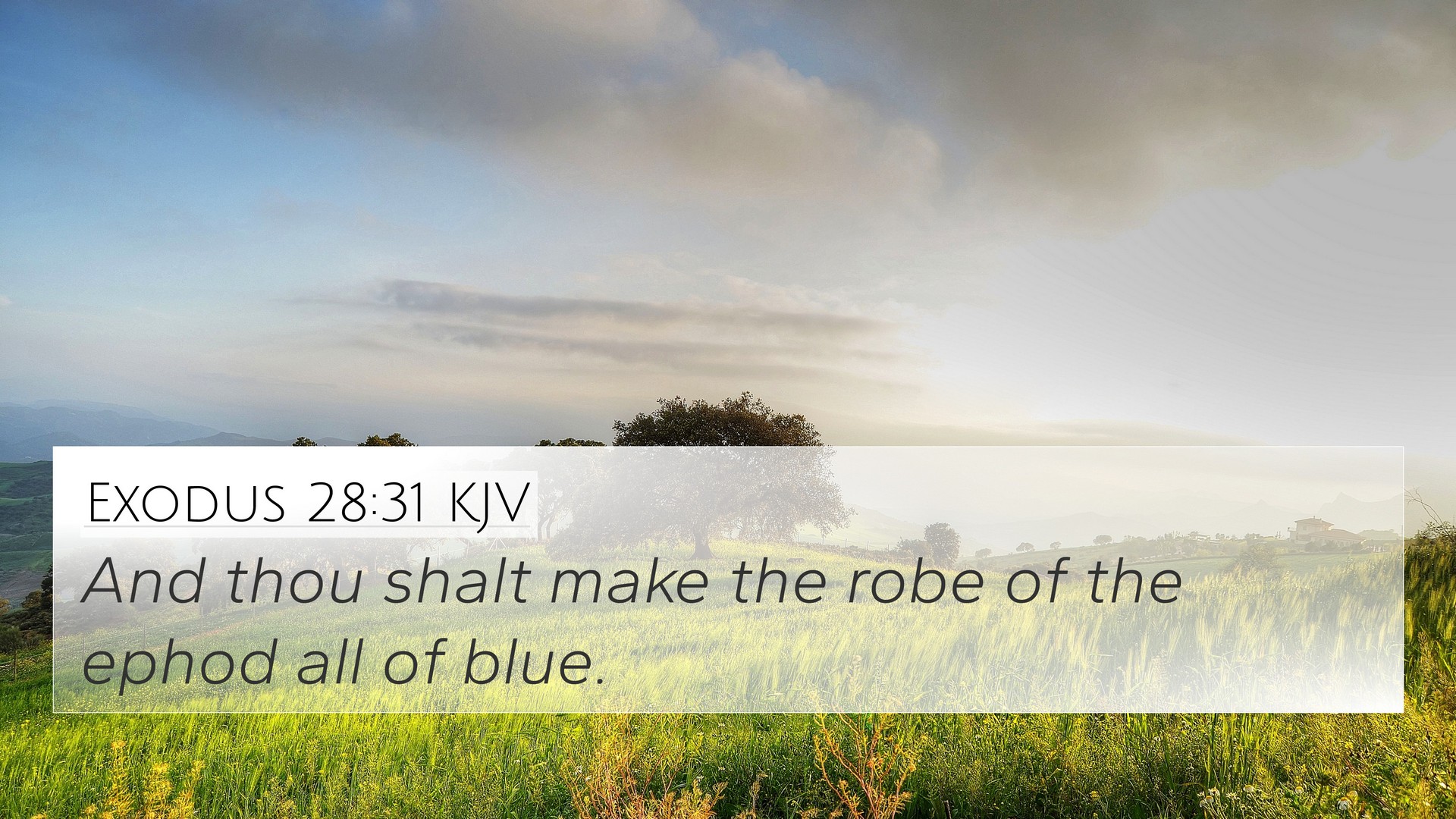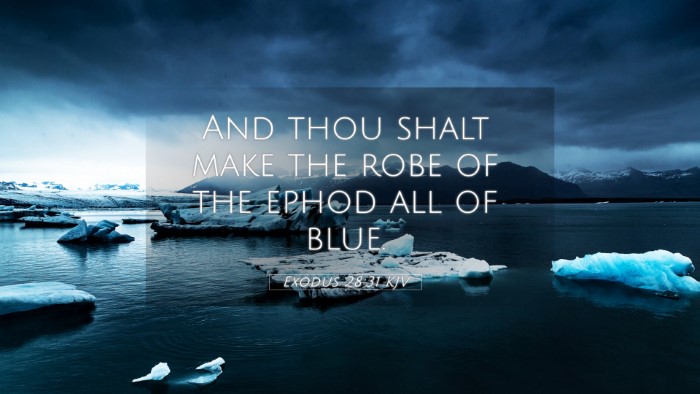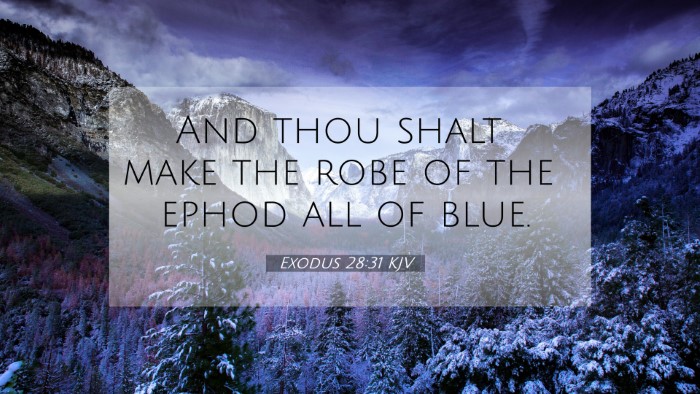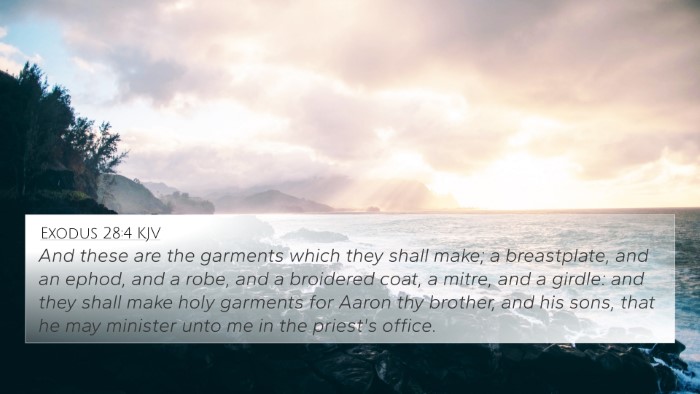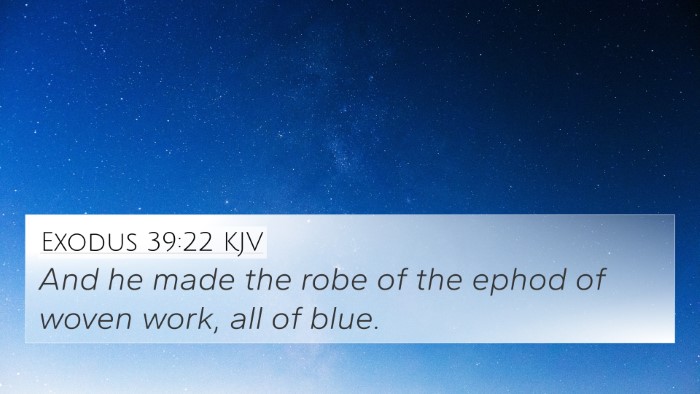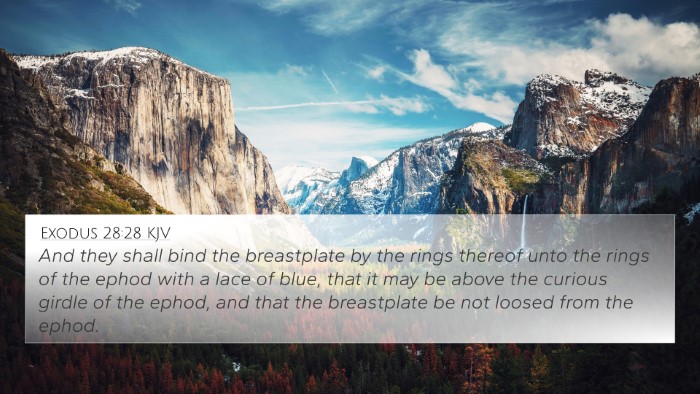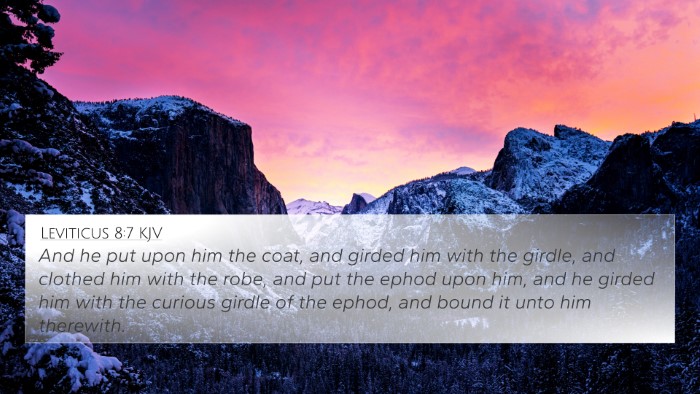Understanding Exodus 28:31
Exodus 28:31 states: "And thou shalt make the robe of the ephod all of blue." This verse is part of the instructions given by God to Moses regarding the garments for the priests, particularly the high priest. The robe is significant in the context of priestly attire, representing both the divine call to service and the importance of holiness.
Significance of the Robe
The robe is mentioned specifically to denote the high priest's distinct role in the religious practices of Israel. The color blue often symbolizes heaven and the divine presence, reminding the priest, and those he represents, of their need for purity and dedication.
-
Matthew Henry's Commentary:
Matthew Henry emphasizes that the blue robe signifies the heavenly nature of the high priest's work. It illustrates the need for a mediator between God and man and the sanctity required in approaching God.
-
Albert Barnes' Notes:
Barnes highlights the importance of blue as a color associated with the divine. The robe’s design and the materials used signify the glory and majesty of the priest's office, reflecting the holiness of God’s character.
-
Adam Clarke's Commentary:
Clarke provides insight into the practical aspects of the robe, noting that its significance goes beyond aesthetics; it serves as a reminder of the office and the responsibilities that come with it, urging the priest constantly to fulfill his role faithfully.
Connections Between Bible Verses
Exodus 28:31 can be cross-referenced with several important verses throughout the Bible, showcasing the thematic connections between Old Testament teachings and their expansions in the New Testament.
- Hebrews 5:4-5: This passage discusses the high priesthood, emphasizing that no one takes this honor on himself but is called by God, much like Aaron was.
- 1 Peter 2:9: Here, believers are described as a royal priesthood, connecting the priestly garments to the identity of Christians as representatives of God's holiness.
- Revelation 19:8: The linen garments of the saints signify purity, paralleling the high priest's role and the divine expectations of conduct.
- Exodus 28:4: This verse details the garments of the high priest, including the breastplate, directly linking to the significance of the robe as part of his attire.
- Leviticus 8:7-9: The consecration of Aaron and his sons as priests shows the need for proper attire in administering the sacred duties.
- Matthew 17:1-2: The transfiguration of Jesus illustrates His divine nature, paralleling the heavenly significance of the blue robe worn by the high priest.
- John 17:19: Jesus’s statement about sanctifying Himself aligns with the concept of holiness represented by the priestly garments.
- Romans 12:1-2: The call for believers to present their bodies as living sacrifices reflects the ongoing priestly service desired by God, echoing the role of the high priest.
- Philippians 3:20: The mention of our citizenship in heaven emphasizes the connection between heavenly representation and priestly duties.
Thematic Bible Verse Connections
The thematic significance of Exodus 28:31 extends beyond the specifics of priestly garb, calling forth deeper reflections on service, separation from worldly norms, and aspiration towards divine standards. The cross-references listed above not only provide links between Exodus and later texts but also offer a basis for understanding the ongoing relevance of these themes.
Tools for Bible Cross-Referencing
To delve deeper into the connections between biblical texts, utilizing tools for Bible cross-referencing can be immensely beneficial. Resources such as Bible concordances and cross-reference guides are essential for anyone wishing to explore scriptural ties comprehensively.
How to Use Bible Cross-References
Understanding how to find cross-references in the Bible can enhance personal study and sermon preparation. In addition, employing Bible chain references offers a systematic approach to explore related scriptures, facilitating a richer understanding of biblical themes.
Conclusion
In summary, Exodus 28:31 serves as a reminder of the high priest’s sacred responsibilities and the importance of being set apart for divine service. Its connections to other scriptures reinforce the understanding that God desires a holy people, both in the Old Testament and in the New Covenant through Christ.
